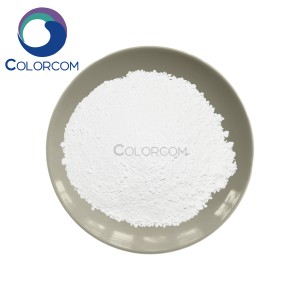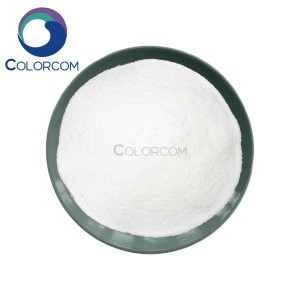-

299-29-6 | Ferrous Gluconate
Products Description Iron(II) gluconate, or ferrous gluconate,is a black compound often used as an iron supplement. It is the iron(II) salt of gluconic acid. It is marketed under brand names such as Fergon, Ferralet, and Simron.Ferrous gluconate is effectively used in the treatment of hypochromic anemia. The use of this compound compared with other iron preparations results in satisfactory reticulocyte responses, a high percentage utilization of iron, and daily increase in hemoglobin tha... -

Nisin | 1414-45-5
Products Description Food production Nisin is used in processed cheese, meats, beverages, etc. during production to extend shelf life by suppressing Gram-positive spoilage and pathogenic bacteria.In foods, it is common to use nisin at levels ranging from ~1-25 ppm, depending on the food type and regulatory approval. As a food additive, nisin has an E number of E234. Other Due to its naturally selective spectrum of activity, it is also employed as a selective agent in microbiological medi... -

126-96-5 | Sodium Diacetate
Products Description Sodium Diacetate is a molecular compound of acetic acid and sodium acetate. According to a patent, free acetic acid is built into the crystal lattice of neutral sodium acetate. The acid is firmly held as is evident from the negligible odor of the product. In solution it is split off into its constituents acetic acid and sodium acetate. As a buffering agent, sodium diacetate is applied in meat products to control their acidity. Apart from that, sodium diacetate inhibi... -

137-40-6 | Sodium Propionate
Products Description Sodium propanoate or Sodium Propionate is the sodium salt of propionic acid which has the chemical formula Na(C2H5COO). ReactionsIt is produced by the reaction of propionic acid and sodium carbonate or sodium hydroxide. It is used as a food preservative and is represented by the food labeling E number E281 in Europe; it is used primarily as a mold inhibitor in bakery products. It is approved for use as a food additive in the EUUSA and Australia and New Zealand(where ... -

127-09-3 | Sodium Acetate (Anhydrous)
Products Description Sodium acetate is anhydrous powder and agglomerate. These two versions are chemically identical and differ only in physical form. The agglomerate offers the properties of non-dustiness, improver wettability, higher bulk density and improver free-flowability. Sodium acetate anhydrous is used in the pharmaceutical industry, as a buffer in the photographic industry and as a supplement for animal feeds to increase the milk fat production of dairy cattle. It is also used ... -

6131-90-4 | Sodium Acetate (Trihydrate)
Products Description Sodium acetate, CH3COONa, also abbreviated NaOAc. also sodium ethanoate is the sodium salt of acetic acid. This colorless salt has a wide range of uses. Sodium acetate may be added to foods as a seasoning. It may be used in the form of sodium diacetate — a 1:1 complex of sodium acetate and acetic acid, given the E-number E262. Frequent use is to impart a salt and vinegar flavor to potato chips. Specification ITEM STANDARD Appearance Colorless crystals, slig... -

Calcium Propionate | 4075-81-4
Products Description As a food Preservatives, it is listed as E number 282 in the Codex Alimentarius. Calcium Propionate is used as a preservative in a wide variety of products, including but not limited to bread, other baked goods, processed meat, whey, and other dairy products. In agriculture, it is used, amongst other things, to prevent milk fever in cows and as a feed supplement Propionates prevent microbes from producing the energy they need, like benzoates do. However, unlike benzo... -

Propyl Paraben | 94-13-3
Products Description This article is about this particular compound. For the class of hydroxybenzoate esters, including discussion on possible health effects, see paraben Propylparaben, the n-propyl ester of p-hydroxybenzoic acid, occurs as a natural substance found in many plants and some insects, although it is manufactured synthetically for use in cosmetics, pharmaceuticals and foods. It is a preservative typically found in many water-based cosmetics, such as creams, lotions, shampoos... -

Methyl Paraben|99-76-3
Products Description Methyl paraben, also mEthyl Paraben, one of the parabens, is a preservative with the chemical formula CH3(C6H4(OH)COO). It is the methyl ester of p-hydroxybenzoic acid. Nature: a white crystalline powder or crystalline. 115-118 ° C melting point, boiling point, 297-298 ° C. Soluble in ethanol, ethyl ether and acetone, micro-soluble in water, chloroform, carbon disulfide and petroleum ether. Minor special aroma and taste, slightly bitter flavor, Zhuo Ma. Preparation:... -

Glucono-Delta-Lactone(GDL)|90-80-2
Products Description Glucono delta-lactone (GDL) is a naturally occurring food additive with the E number E575used as a sequestrant, an acidifier, or a curing, pickling, or leavening agent. It is a lactone (cyclic ester) of D-gluconic acid. Pure GDL is a white odorless crystalline powder. GDL is commonly found in honey, fruit juices, personal lubricants, and wine[citation needed]. GDL is neutral but hydrolyzes in water to gluconic acid which is acidic, adding a tangy taste to foods, thou... -

Calcium Acetate|62-54-4
Products Description Calcium Acetate is the calcium salt of acetic acid. It has the formula Ca(C2H3OO)2. Its standard name is calcium acetate, while calcium ethanoate is the systematic IUPAC name. An older name is acetate of lime. The anhydrous form is very hygroscopic; therefore the monohydrate (Ca(CH3COO)2•H2O is the common form. If an alcohol is added to a saturated solution of calcium acetate, a semisolid, flammable gel forms that is much like “canned heat” products such ... -

Sorbic Acid|110-44-1
Products Description Sorbic Acid, or 2,4-hexadecenoic acid, is a natural organic compound used as a food preservative. The chemical formula is C6H8O2. It is a colorless solid that is slightly soluble in water and sublimes readily. It was first isolated from the unripe berries of the rowan tree (Sorbus aucuparia), hence its name. As colorless acicular crystal or white crystalline powder, Sorbic Acid is soluble in water and can be used as preservatives. Sorbic Acid can be widely used as a ...

